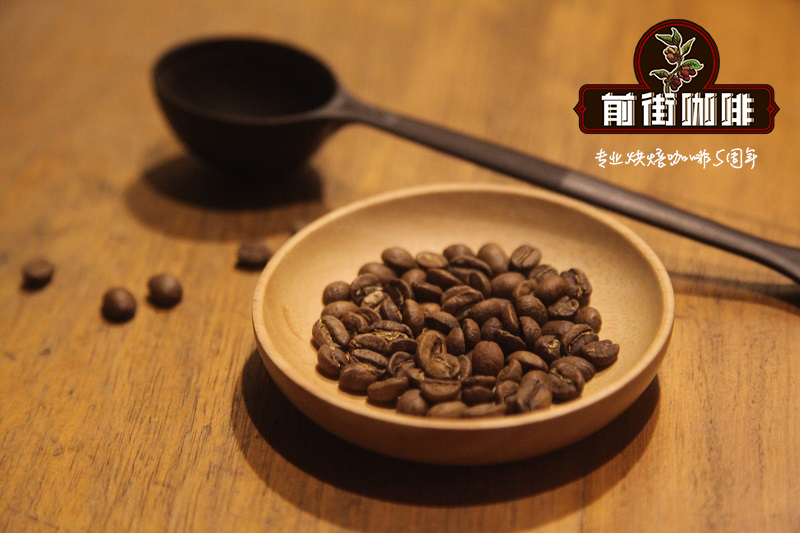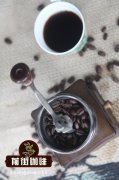Ethiopian coffee Shakiso G1 decaf series what is decaf coffee

Professional coffee knowledge exchange more coffee bean information please follow the coffee workshop (Wechat official account cafe_style)
Ethiopian low-caffeine series Shakiso G1 sun (hanging ear bag)
Ethiopia Decaf Shakisso G1 Natural
0.1% very low caffeine is very refreshing.
Mountain Water Decaf uses mountain spring water from Mexico's highest peak, Pico de Orizaba (5500m above sea level), to remove caffeine. It belongs to a non-chemical decaffeinated process, similar to the Swiss water treatment model, except that Mountain Water pays more attention to restoring the original flavor of coffee, especially the "positive" flavor.
Billed as 100% chemical-free, processed coffee beans contain less than 0.1% caffeine after roasting (in line with Canadian and international standards. Decaf coffee is required to contain no more than 0.3% caffeine in brewed coffee. That means no more than 5 milligrams of caffeine in a cup of decaf.
Shaqisuo is the most attractive micro-producing area in the Guji producing area, which is located in the southeast of Yejia Shifei, with an average altitude of more than 1800 meters. The fertile black soil (Vertisol) and significant temperature difference between day and night make the local have various local conditions for producing high-quality boutique coffee.
The sources of local coffee production almost all belong to the form of individual small farmers. At the arrival of the production season, the ripe red transparent berries from their neighbors are picked and sent to the processing plant, placed on a well-ventilated African scaffolding to control the temperature and fermentation degree, and after the pulp is removed, the water content is reduced to between 11.5% and 12%. When the post-processing and static operations are completed, the export is done through the competitive bidding system of the ECX Ethiopia Commodity Exchange.
Palate description: classic sun style, ripe fruit flavor, peach and mixed berry, cocoa, long, lively and varied fruit.
36 aromas of coffee: Maple syrup, lemon and citrus, honey, cream, coffee flowers
│ artificial decontamination of decaffeinated coffee
Decaf coffee, as its name implies, is coffee that contains only trace amounts of caffeine. Coffee contains many ingredients and substances, among which caffeine has an obvious effect on the human body. For many people who are addicted to coffee, but their physical condition does not allow caffeine, decaffeinated coffee is their "savior", but everything has its pros and cons. Coffee that has been artificially decaffeinated is almost always denounced as coffee water or smells bad like chemicals.
In general, the moisture content of raw coffee beans is 12%, and the caffeine content is 1. 5%. According to internationally recognized standards, the weight of caffeine in raw coffee beans treated with low caffeine shall not exceed 0.1% of raw beans, and powdered decaf coffee shall not exceed 0.3% by weight. In other words, caffeine should not exceed 5 mg in a cup of decaf (usually 170 grams).
For cost considerations, most of the low-caffeine coffees on the market are removed by manual methods, and most of them use the following four types:
Ethyl acetate treatment
Dichloromethane treatment
Swiss water treatment method
Supercritical carbon dioxide treatment
The first two are most commonly used in decaf places, where ethyl acetate or dichloromethane is used as a solvent to remove coffee, where most of the coffee flavor is lost, at a relatively low cost, but the taste is really poor, or there are some residues, but experts say it is almost harmless to the human body after baking. Although the latter 3 and 4 can retain most of the flavor, but because the cost is more than 3 times that of the first two, almost all of them are not used for profit, and it is extremely difficult for consumers to drink the low-caffeine coffee made by these two treatments.
Because of manual treatment, many people think that commercial decaf coffee has a poor flavor. The caffeine content of Arabica accounts for about 1.5% of the bean seed 1Murray. The standard of low-caffeine coffee set by similar FDA institutions in Europe and the United States is basically 0.03%. At present, the content of the three natural low-caffeine coffees sold in Europe, the United States and Japan is basically 0.4%, 0.9%, which can be counted as half-low at most.
Important Notice :
前街咖啡 FrontStreet Coffee has moved to new addredd:
FrontStreet Coffee Address: 315,Donghua East Road,GuangZhou
Tel:020 38364473
- Prev

Nicaraguan coffee pointed bourbon natural semi-decaf coffee what is decaf coffee
Professional coffee knowledge exchange more coffee bean information please follow the coffee workshop (Wechat official account cafe_style) Nicaragua Mierisch El Minita Laurina Natural Nicaragua Mierui boast estate Minita sun sharp body wave next to natural semi-low caffeine coffee tip next to the natural very low caffeine, rare, meticulous and charming fragrance, for
- Next

Yemeni famous coffee beans Yemeni coffee dark red Majaha Marqaha single coffee beans recommended
For more information on coffee beans, please follow the coffee workshop (Wechat official account cafe_style). In fact, Yemen is located on the Arabian Peninsula of the Asian continent, but it is very close to Africa as long as it crosses the Red Sea and the Gulf of Aden Gulf of Aden. However, other Arab countries do not produce coffee, so people classify Yemeni coffee as North African coffee.
Related
- Detailed explanation of Jadeite planting Land in Panamanian Jadeite Manor introduction to the grading system of Jadeite competitive bidding, Red bid, Green bid and Rose Summer
- Story of Coffee planting in Brenka region of Costa Rica Stonehenge Manor anaerobic heavy honey treatment of flavor mouth
- What's on the barrel of Blue Mountain Coffee beans?
- Can American coffee also pull flowers? How to use hot American style to pull out a good-looking pattern?
- Can you make a cold extract with coffee beans? What is the right proportion for cold-extracted coffee formula?
- Indonesian PWN Gold Mandrine Coffee Origin Features Flavor How to Chong? Mandolin coffee is American.
- A brief introduction to the flavor characteristics of Brazilian yellow bourbon coffee beans
- What is the effect of different water quality on the flavor of cold-extracted coffee? What kind of water is best for brewing coffee?
- Why do you think of Rose Summer whenever you mention Panamanian coffee?
- Introduction to the characteristics of authentic blue mountain coffee bean producing areas? What is the CIB Coffee Authority in Jamaica?

